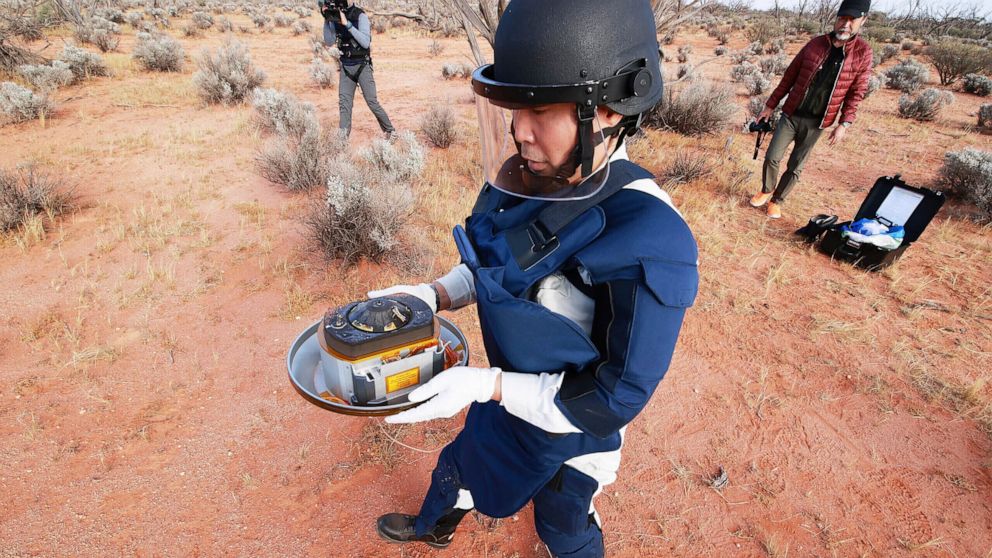A capsule with asteroid samples arrives in Japan for research

The Japan Space Agency says a small capsule containing asteroid soil samples dropped by the Hayabusa 2 spacecraft from space has returned to Japan to research the origin of the solar system.
Tokyo – A small capsule containing asteroid soil samples dropped from space JapanThe Hayabusa2 spacecraft has landed in AustraliaN arrived remote tuesday at Japan To research the origin of the solar system and life on Earth.
The Japan Aerospace Exploration Agency said its capsule, tightly sealed and carefully stored in a container box, arrived in Japan on a flight from Australia It was attended by a group of JAXA officials and was later transferred to the Sagamihara Research Facility, near Tokyo.
At the end of its year-long flight from the asteroid Ryugu, more than 300 million kilometers (190 million miles) from Earth, Hayabusa2 launched the capsule on Saturday from 220,000 kilometers (136,700 mi) into space, successfully sending it to land a target area in the desert Sparsely populated in Woomera.
The high-resolution work at the end of Hayabusa2’s six-year mission impressed many Japanese.
The unmanned Hayabusa 2 spacecraft was launched in December 2014, and landed twice last year on the asteroid Ryugu. Despite an unexpected rocky surface that forced the mission team to review its landing plans, the spacecraft succeeded in collecting data and soil samples from two locations – on the surface and underground.
Scientists say that the samples, especially those taken from below the surface of the asteroid, contain data from 4.6 billion years ago that were not affected by the speed of radiation and other environmental factors. They are particularly interested in studying organic matter in samples to see how they are distributed in the solar system and whether or how they are related to life on Earth.
Samples will be processed in a clean room at the Sagamihara facility to avoid any external influence, and work is expected to start soon. After preliminary and practical studies in Japan, some samples will be shared with NASA and other international scientists for further study.
Outside the Jaxa facility in Sagamihara, senior Hayabusa 2 team members and local fans lined up at the gate on Tuesday and welcomed the arrival of the capsule, which had been transported from the airport by truck, with some holding a sign saying “Welcome back!”
“It’s really like a dream,” said Yuichi Tsuda, Hayabusa2 Project Manager. “After 5.2 billion kilometers (3.2 billion miles) of the six-year space flight, (the capsule) is back and is now in front of me.”
The capsule is scheduled to be analyzed at the facility later this month.
———
Follow Mary Yamaguchi on Twitter at https://www.twitter.com/mariyamaguchi

“Coffee fanatic. Gamer. Award-winning zombie lover. Student. Hardcore internet advocate. Twitter guru. Subtly charming bacon nerd. Thinker.”











